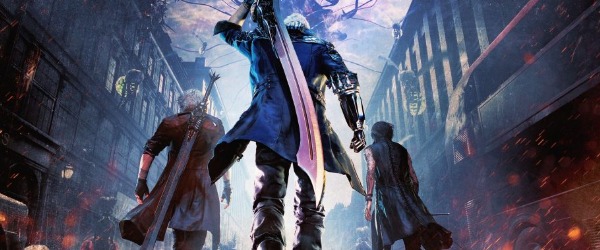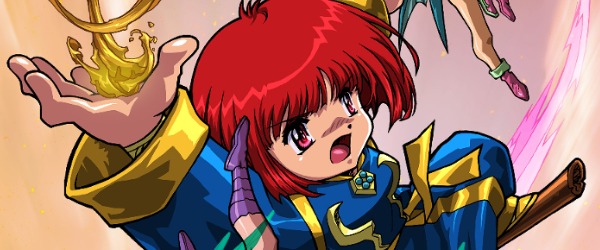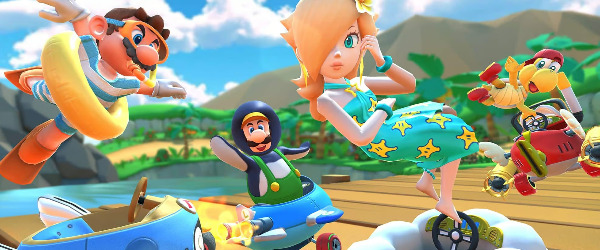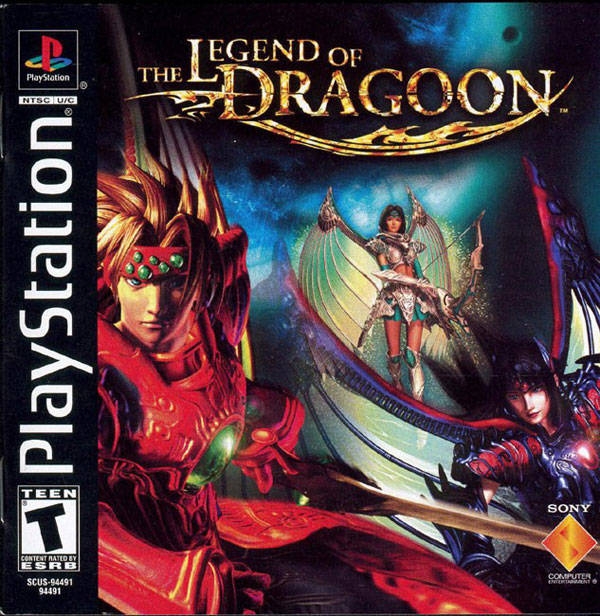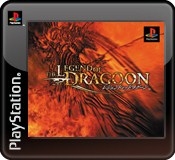
Forgotten Gems #8: The Legend of Dragoon - Article
by Taneli Palola , posted on 05 November 2018 / 5,531 ViewsWhen you look at the timeline of video games from their early years in the 70s all the way to present day, you notice certain trends that come and go regarding which types of games tend to get a spotlight put on them. We've seen the era of platformers (both 2D and 3D), the age of the FPS, the domination of open world games, and many more. In the late 90s and early 2000s we also went through a JRPG boom period, following on from the massive success of Final Fantasy VII.
During that period almost every Japanese developer and publisher realized that JRPGs could be more than just a niche genre - that it was possible to achieve great success, with millions of copies sold even in the west. While no series outside of Final Fantasy really broke into the mainstream, despite numerous attempts, many still tried and found a fairly large audience for themselves. One of these hopefuls at the time, and a personal favourite of mine, was The Legend of Dragoon.
The Legend of Dragoon - Facing the Past
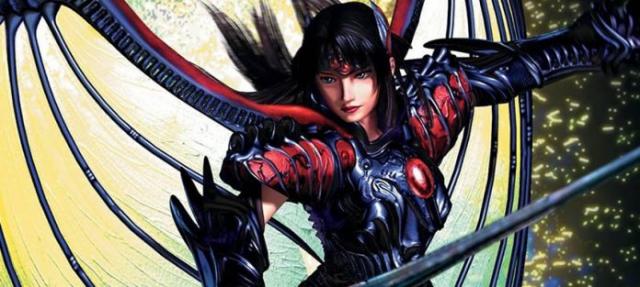
Often the idea that gets thrown around about the late 90s JRPG boom is that everyone was essentially trying to cash in on the newfound audience that Final Fantasy VII had created by quickly greenlighting new projects. However, that wasn't the case with The Legend of Dragoon, as its development had actually already began in 1996, well before the launch of the juggernaut that would be FFVII.
Development for The Legend of Dragoon at Sony's Japan Studio began around the same time as Ape Escape and Ico, and partly due to this the team working on the game was initially very small, with just a handful of people working on it at the time. As time wore on, however, it ended up becoming one of the largest 1st party projects that Japan Studio had ever worked on up, at least up until that point.
By the end over 100 people had worked on the title internally, with it taking over three years to develop and costing around $16 million (a very high budget for a PlayStation title at the time). A huge reason for the larger than expected budget was the fact that the decision to include CGI cut scenes in the game happened when it was already far into production, and the team working on the CG had very little experience in creating many of the effects required, such as smoke, increasing the time it took to animate these sequences.
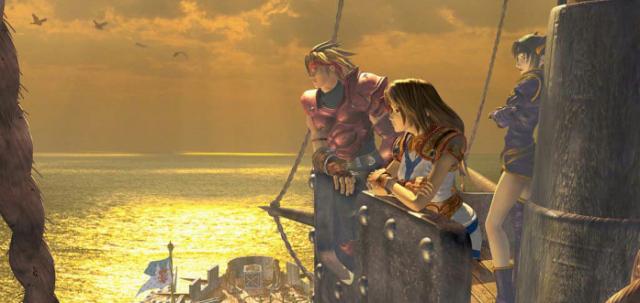
The Legend of Dragoon also went through some significant changes in design and style during development, most notably shifting the setting and tone towards a more realistic one, discarding some of the more fantastical elements such as unnatural hair colours and other such details that were part of the game's design early on. An example of this is Rose, who in the initial character design had green hair, but this was then later changed to black.
One of the most interesting aspects of The Legend of Dragoon is its battle system, which is quite different from pretty much every other JRPG on the market at the time, and even today. Most notably, it features an ”addition” system with which the player must string together combos through well-timed button presses in order to deal as much damage as possible. This system makes battles much more interesting than they would otherwise be, as it means that you're not just picking commands from a list and watching them unfold. Instead, it actively involves the player in fights at all times.
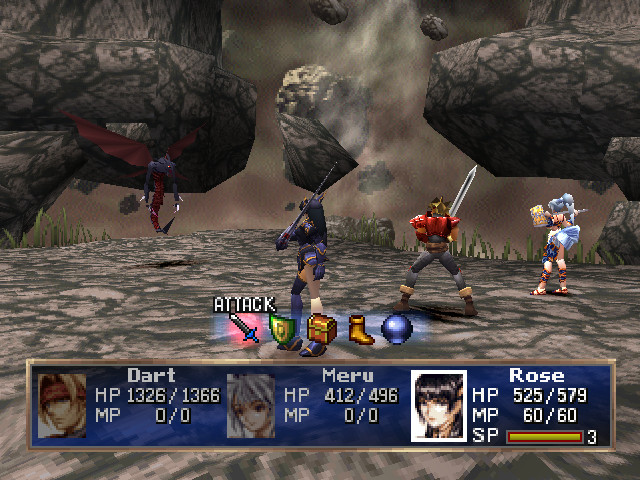
Another difference from a lot of other JRPGs is the game's lesser focus on magic use in combat. This is another aspect that came from the team's push for realism, limiting the use of magic to just the dragoon forms, certain items, and one of the races that exists in the world. All this gives the battle system, and the game's world in general, a unique touch, where elements such as magic are extremely rare both from mechanical and lore perspectives.
The music for The Legend of Dragoon was primarily composed by Dennis Martin and Takeo Miratsu. Martin had no prior experience in video game music, but was chosen because the developer wanted the game to have a different musical style to other RPGs of the era. Initially, Martin was also supposed to compose the entire score by himself, but the increasing scale of the game eventually made this unfeasible, and Miratsu was brought on board to take on some of the composing duties. Curiously, the two composers never actually met during the project.
Since the game's original release in late 1999, rumours of a sequel have also popped up here and there every few years, but this has never materialized into anything tangible. However, the game's producer Shuhei Yoshida mentioned in a blog post that at some point after he left Japan a sequel was actually in pre-production, but it was ultimately cancelled for undisclosed reasons.
Why Was The Legend of Dragoon Forgotten?
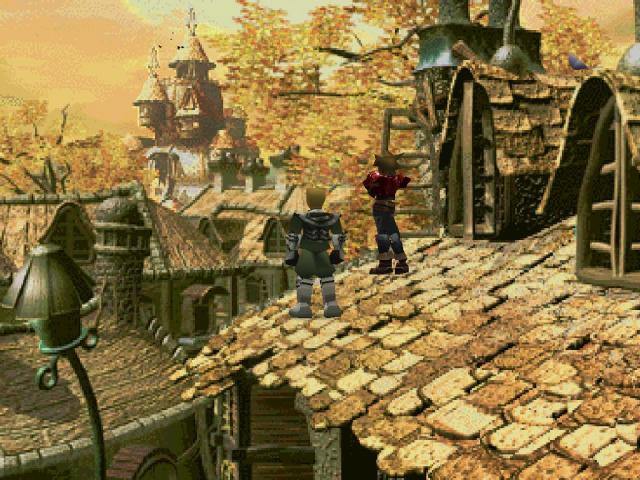
It's a difficult question to answer, as The Legend of Dragoon was actually a pretty big success at the time, especially for a completely new and untested IP competing in a genre that was very crowded on the PS1. Ultimately, it went on to sell nearly 2 million copies worldwide, the majority of them in the west. It was by far the biggest success Sony's 1st party studios had ever had in the genre, and for such an unknown game it was a massive win for the company.
Yet, for one reason or another, The Legend of Dragoon was quite quickly brushed aside and has rarely been mentioned since by Sony. It's difficult to point to a specific reason behind this, as there's never really been any official reason given. As such, anything I talk about here is largely guesswork and conjecture on my part, and could very well be wrong. Still, if we look at the sales pattern of The Legend of Dragoon, there is one rather obvious difference to most other JRPGs of the era that might have had something to do with this.
Unlike almost all other games in the genre, The Legend of Dragoon had its greatest success outside of Japan, which was quite unusual at the time, and still is to a lesser degree. With this in mind, perhaps the lower than expected sales in Japan made Sony hesitant to commit to a JRPG franchise in the long term, despite the title's fairly significant sales elsewhere. At the time Japan was still in general the most important region when it came to the success of any given JRPG, so this might have affected the decision to move on from this particular title.
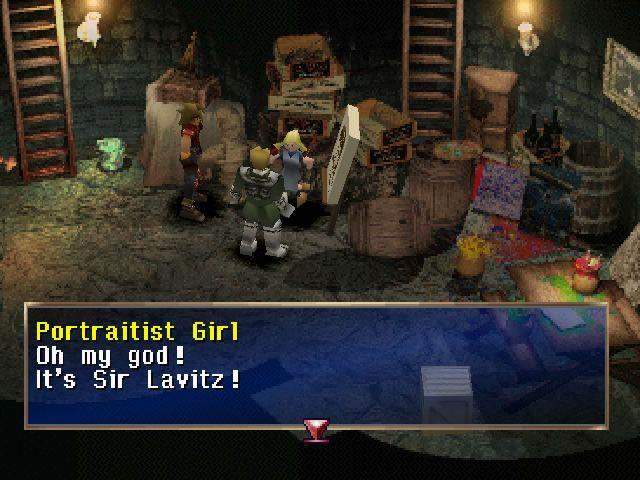
Another contributing factor may have been the game going over its original budget by a fair amount. While Sony did eventually did turn a pretty nice profit from The Legend of Dragoon, it wasn't until its NA release that this happened. The Japanese sales alone weren't enough to cover the game's $16 million production costs, which may have made Sony think twice about greenlighting any further JRPGs of a similar scale. Finally, the large number of competitors on the market around the turn of the millennium may have also played a role in the game's ultimate fate.
Despite its high sales on the PS1, The Legend of Dragoon can today be considered a cult classic at most. The game still has a very dedicated fanbase, but over the last 20 years it has received remarkably little attention from Sony. For comparison, TloD actually outsold many other classic PS1 JRPGs like Xenogears, Suikoden II, Wild Arms and Legend of Mana; all franchises that have since received numerous additional entries (or spiritual successors, in the case of Xenogears). In fact, none of these series have a single game that has outsold The Legend of Dragoon to this day.
What Makes The Legend of Dragoon Worth Remembering?
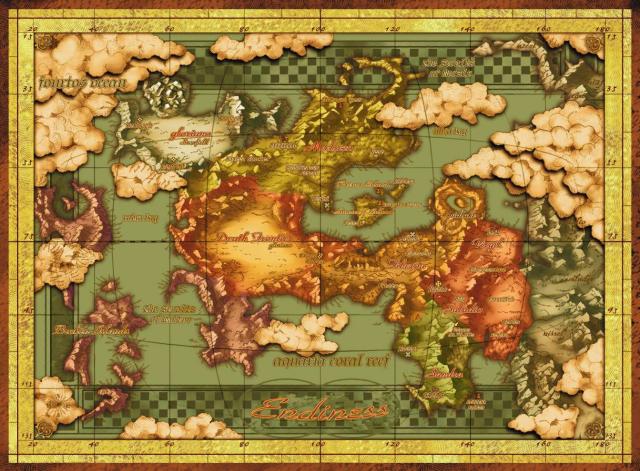
The late 90s and early 2000s was a very crowded time in the JRPG space, with countless different titles vying for a very limited amount of exposure and room at the top of the genre. Many developers tried and failed to capture the limelight, mostly just treading old ground that other, established series had already covered years before. However, there were still games that genuinely carved out their own places at or near the top of mountain, and in my opinion The Legend of Dragoon was one of them.
After thinking about why I love this game so much, I realized it's because it manages to feel both familiar and unique at the same time. The Legend of Dragoon doesn't shy away from using many conventions of the genre within its narrative, gameplay and character development, but at the same time also brings something new to every element found within.
This is perhaps easiest to see in the game's battle system, and what the game calls ”additions”. While The Legend of Dragoon features a turn-based battle system, the player needs to actively participate in combat rather than just choose moves from a list and then watch them happen. For example, during physical attacks players must use correctly timed button presses to extend the attacks into full combos, and therefore do more damage to enemies.
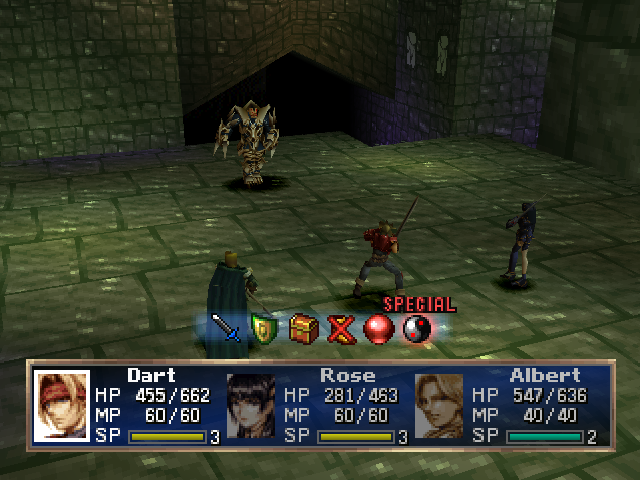
Things like that, and other such elements in combat, make battles much more interesting and engaging than in most other JRPGs where the player is usually just passively watching and waiting for each attack to finish. Attacks in Dragoon form also use a similar system. The only downside to the battle system is that magic tends to feel increasingly useless outside of certain specific situations and spells as the game progresses.
The story is another great example of doing things just differently enough to give the entire game its own unique feel. It starts out feeling like a clear-cut good vs. evil narrative, with the main character finding his old home village razed to the ground and his childhood friend kidnapped right as he returns from a long journey, and with the country in the midst of a brewing civil war. However, as the story progresses nearly all of the characters on both sides of the spectrum begin to show shades of gray in their actions and motivations.
In addition, as the story unfolds and more and more details of the world's history come to light, you really start to feel the weight of everything that's happening. There's a sense of tragedy to the entire narrative, with great disasters from the past still looming large over many of the characters and different races in the game. It also succeeds in building a world that feels alive and that actually has a history onto which the events of the game build upon, rather than feeling like isolated events separate from anything that came before.
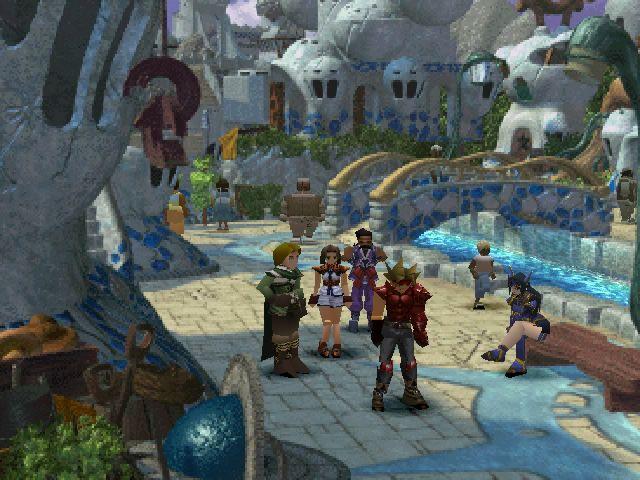
The soundtrack as well, while I wouldn't quite count it among the finest in the genre, has its own unique flair to it and fits the game wonderfully. I still to this day find myself just stopping to listen to certain tracks from the game even while playing, which to me has always been a mark of a great and memorable score.
Much of this is thanks to the composer, Dennis Martin, who had no prior experience in composing music for video games, and as such had no pre-conceived notions about how music in a JRPG should sound. This gave him something of an outsider's perspective to the whole project, and resulted in a fresh take on the genre and its musical conventions.
Of course, The Legend of Dragoon isn't without its issues. Graphically, it has naturally aged quite a bit considering it's a PS1 title, though the pre-rendered backgrounds do still actually hold up quite well. The polygonal character models have suffered the most, and while the CGI cut scenes were most definitely impressive at the time, many of them do show their age as well these days. It's not a huge issue, but worthy of mentioning nonetheless. Besides, some of the cutscenes are still quite gorgeous, and are among the most visually stunning moments the PS1 ever produced.
Another area where the game shows its age is one that is very familiar to many who played games - particularly localized Japanese titles - back in the 90s, namely the voice acting. While there isn't much of it, as it's mostly relegated to the animated cut scenes, what is there isn't all that good, to put it charitably. It's nowhere near the worst I've heard from this particular era of video games, and a few of the actors actually do a decent job. Still, most of them are honestly quite awful, though that's something that comes with the territory I guess. It's just a thing you needed to accept at the time.
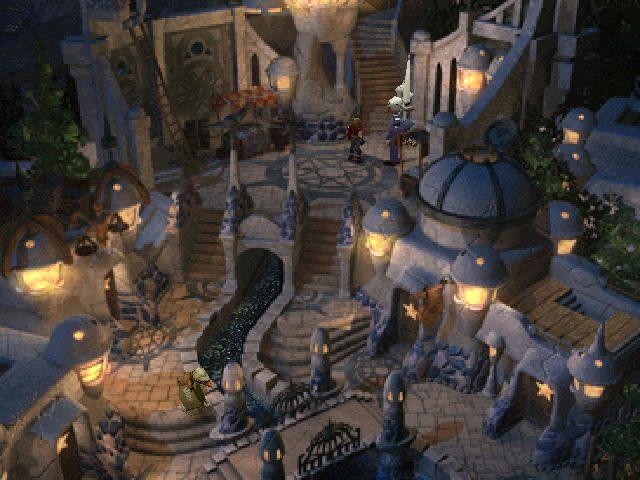
In addition, the localization is sometimes a bit dodgy, with some rather odd phrases, spelling mistakes, and other occasional errors to be found. However, the positives far outweigh the negatives, and in my opinion The Legend of Dragoon is one of the most enjoyable and critically underrated games ever released. The problems it has can largely be attributed to the game's age and the period in which it was made, and even then they really aren't all that major.
Overall, I find The Legend of Dragoon to be a genuinely excellent, and often overlooked JRPG from an era filled with classics of the genre. During a period when the genre was very much defined by one name – Final Fantasy - it still managed to do something different and stood out from the competition. It has since slowly fallen into relative obscurity, as other franchises have carried on while The Legend of Dragoon remained as just a single PS1 title. It's a forgotten gem that deserves to be remembered more than it is.
Sources:
- Shuhei Yoshida Blog Post (PlayStation Blog)
- Retrospective Article on Sony's Japan Studio (Kotaku)
- Famitsu Interview with Iwata Kenichi and Hasabe Hiroyuki (RPGFan translation)
More Articles
Is not really a forgotten gem on this site
Seems to me that the only one who forgot about this game is Sony
I can only hope it remains forgotten by Sony as a certain someone does not deserve it.
It's not forgotten if you mention it enough times








